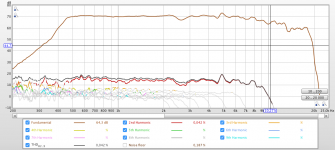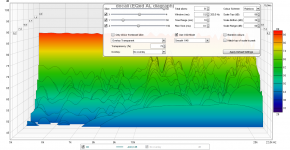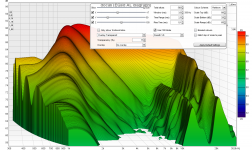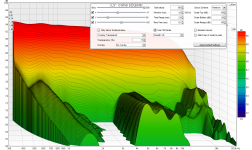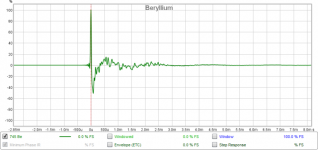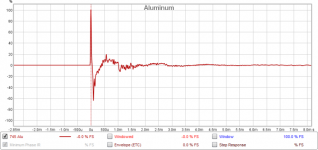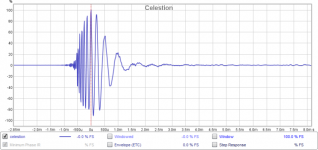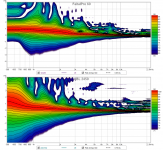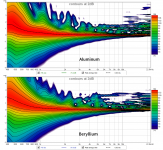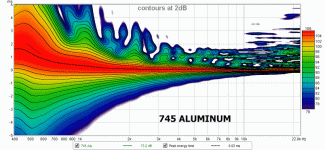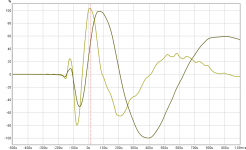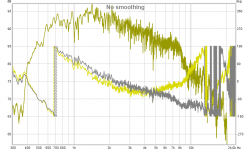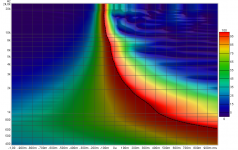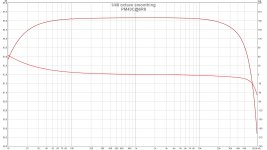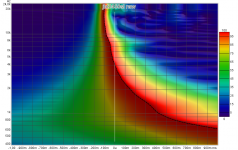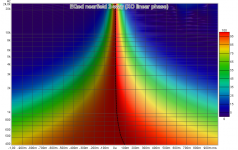Thanks, the 1730 driver has a cleaner waterfall up top shame it can't cross as low.
I've used as low as 1200 (huge 230 hz radial horn lol) but that's really not what it's for. I think that file was generated from 2K up with Faital tractrix. This driver is for 3-8K up above a large format mid driver like the JBL 2450SL posted above. That's why I wondered why you guys were looking at 5K up and that mid format Radian 745. That's a midrange driver to me. 😎
Thank you for sharing POOH.
If anyone is interested, here's the distortion of the 745 Be driver with the 8.2 uF in series measured at horn mouth. The hole at the back is plugged, which yields a tiny bit more excursion at lower frequencies. Of course the volume level is low so distortion is low as well - no surprise.
If anyone is interested, here's the distortion of the 745 Be driver with the 8.2 uF in series measured at horn mouth. The hole at the back is plugged, which yields a tiny bit more excursion at lower frequencies. Of course the volume level is low so distortion is low as well - no surprise.
Attachments
Is it really fair to compare these Celestion drivers with 1.4" and 1.7" voice coil diamater to the Radian with 3" diamaeter?
I would assume that things get worse exponentially with increasing diamameter. But we could maybe compare it with these diagrams:
http://www.behringer-electric.de/files/news/Radian_Truextent/Vergleichstest%20475BePB_vs_2426H_vs_2426_RadianAlu.pdf
@POOH
I have imported one of your wav files. The phase is not really usable. May I ask you what microphone was used for the measurement and what equipment was used besides this. Have you calibrated the sound level? Is the test amplifier chain tested and calibrated?
I would assume that things get worse exponentially with increasing diamameter. But we could maybe compare it with these diagrams:
http://www.behringer-electric.de/files/news/Radian_Truextent/Vergleichstest%20475BePB_vs_2426H_vs_2426_RadianAlu.pdf
@POOH
I have imported one of your wav files. The phase is not really usable. May I ask you what microphone was used for the measurement and what equipment was used besides this. Have you calibrated the sound level? Is the test amplifier chain tested and calibrated?
OK. Then this driver could be a tweaker's delight
Maybe, but you have to be aware that the screws of the back cap at the same time hold the diaphragm in place. The description "self aligning" is a little bit misleading as there is a magnetic force that attracts the diaphragm to the driver. But there is some very small movement possible and I think the impedance should be checked with respect to a refence curve. Ahhh, I remember, some people here do not trust in this procedure. Then forget these words

Here graphs on same scales first is relative snappy one from POOH second is offline EQed AL diagraph from docali and third is own dirty quick offline EQed 2426H/2370a combo. Real world last two can get better up at high roll off in myself in the heat of moment mistakenly target a clean synthetic 2nd order slope not accounting for other domain stop bands as microphone and sound card which will push to how target curve will look, what i mean here can be seen up at HF stop band ringing comparing docali AL diagraph in fourth attachment to fifth attachments where that 3,5 incher had those theory included and its 4-10kHz ringing should be ignored in its either because of foam core rattle or misused too low in frq for a driver that have non ventilation on one side of spider.
Attachments
A note about decay time could be that very much material have dynamic range in area 6-10dB so having acoustics first wave front to show clean decay above that into 20-30dB area should in theory sound very good clean and snappy shouldn't it.
Have you already recognized the impulse Export for the other horn in the zip file here?
Beyond the Ariel
Beyond the Ariel
Thanks everyone for all the great plots and graphs. I ran some of my own for the Celestion that POOH posted, but the impulse doesn't look right to me. Please have a look and tell me what you think. With this impulse, I'm not sure of my spectrogram or waterfall plots.
Attachments
Have you already recognized the impulse Export for the other horn in the zip file here?
Beyond the Ariel
Year thanks it looks good and at 96kHz 🙂 so maybe APL_TDA will accept my loop, intend try offline EQ process it tonight.
Haven't looked into IR from POOH myself but you and Pano have pointed out it looks weird in phase, same was my impression when fluid analyzed it in post 14776 where we can see it looks like it had been FIR phase time aligned more than 1800º and that is more than 20th order of minimum phase linearization which is somehow weird, POOH must have a very fast mid or woofer it shall catch up to 😀.
@POOH
I have imported one of your wav files. The phase is not really usable. May I ask you what microphone was used for the measurement and what equipment was used besides this. Have you calibrated the sound level? Is the test amplifier chain tested and calibrated?
The microphone is the Dayton EMM6 with Fast Track Pro and a Yamaha M40 power amplifier. The level has been calibrated. I see what you mean regarding phase - sometimes it seems right and other times not - I imagine something in the settings is wrong? and there is always operator error? 😉
What in the settings/use of REW can cause this?
Here are two more wave files from newer measurements. Do these have the same problem?
View attachment jbl2450sl.wav.zip
View attachment faital60.wav.zip
Thanks
The Faital and JBL impulses are cleaner, just inverted.
Phase is still odd, tho.
EDIT: Never mind on phase, I was looking at the wrong part of the spectrum.
Phase is still odd, tho.
EDIT: Never mind on phase, I was looking at the wrong part of the spectrum.
Nice graphs Pano especially the animation is awesome 🙂 know its hard to see in published scales but there is error for jbl2450sl in above 4kHz its faster than real time, you can better see this in below scale but its also there into your, asking for minimum phase of amplitude also show problem and in IR/SR window even SR is hurt by that prering, don't know the actual reason but expect more failure is in measurement chain than in REW, waterfall will probably show excellent up there when it has decayed before waterfall begin 😛
Attachments
The microphone is the Dayton EMM6 with Fast Track Pro and a Yamaha M40 power amplifier. The level has been calibrated. I see what you mean regarding phase - sometimes it seems right and other times not - I imagine something in the settings is wrong? and there is always operator error? 😉
What in the settings/use of REW can cause this?
Here are two more wave files from newer measurements. Do these have the same problem?
View attachment 639905
View attachment 639906
Thanks
Mmmmhhh, for me this looks strange again.
IMHO it could be related to the microphone. Had an UMK1 before which is in the same price class as yours. It was a great microphone for amplitude measurements but not for phase. The phase looked too often questionabe for me. This was the reason why I invested in the Earthworks.
You could test two settings in REW if this helps to overcome this issue:
- Sub-sample timing adjustment
- Allow 96 PPO log spacing
Another test is to measure the amplification chain in REW and post it here. The output of your audio interface drives your power amp terminated with an 8R2 resitor or similar and this output back to the audio interace (microphone input as line input without phantom power). This whole chain can be calibrated inside REW. Here is my chain before calibration:
Attachments
Last edited:
Not sure I see that. Can you point it out? I don't see anything unusual before the start time on the spectogram, but the impulse does look doubled or something.... there is error for jbl2450sl in above 4kHz its faster than real time...
Year thanks it looks good and at 96kHz 🙂 so maybe APL_TDA will accept my loop, intend try offline EQ process it tonight.
Haven't looked into IR from POOH myself but you and Pano have pointed out it looks weird in phase, same was my impression when fluid analyzed it in post 14776 where we can see it looks like it had been FIR phase time aligned more than 1800º and that is more than 20th order of minimum phase linearization which is somehow weird, POOH must have a very fast mid or woofer it shall catch up to 😀.
Very good!

And if you work on this I have also the export for the same thing but with ventilation hole closed. May be interesting how this changes LF.
Attachments
...Can you point it out...
It looks being in yours too just harder to see because of crude time scale, below should help with a zero time line edited white then follow performance of black dotted peak energy time which very weird show frq 4kHz and up will happen before real time, the one at right better follow book for minimum phase domain.
Attachments
Thanks a lot!
I have done another measurement with a different horn which is similar to Beyma TD385. In this case the microphone is 35cm away from the mouth. Some damping material was on the floor. And the measurement was done with 96kHz 🙄
This horn needs considerable EQ also in the 1k-2k5 region which might be related to the strange looking mouth area. This horn does not show such a deep hole around 12k. Also attached is an impuls export. I have done the measurement with more power (louder) than before. The impedance curve in this horn was already shown earlier.
Took another approach this time to learn something under process myself so little late because all was manual work but fun and actual predictions are excellent to dream about in real world. To base correction first thing in REW was export MP of raw and import it again, and then to get rid of possible real world comp filter reflection at 19kHz plus 29kHz added FDW 35 width in cycles. Then made curve for synthetic target band-pass in Rephase being a 8th order LR at 800Hz - 2nd order BW at 20kHz, having a downward tilt being 7dB from point 30Hz to point 30kHz, and also added LP 25kHz 2nd order BW for microphone domain and LP 48kHz 24th order LR for digital domain. Then after some offsetting did the math to get difference curve between MP/FDW filtered raw and target curve, and that one was EQed flat over in Rephase to create reverse EQ curve, if you want Rephase settings file to create DSP filter give a note.
Waterfalls this time are much improved to excellent and probably because of the filtering and more care into Rephase task, think only real world setup can tell if they comp filter reflections sits there at 19kHz plus 29kHz and make their noise. BTW I'm away until late Saturday if any questions is asked.
Attachments
-
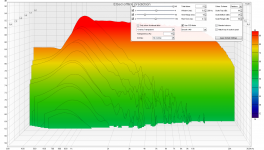 2008.png202.7 KB · Views: 126
2008.png202.7 KB · Views: 126 -
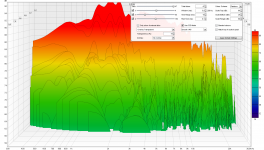 2007.png347.6 KB · Views: 126
2007.png347.6 KB · Views: 126 -
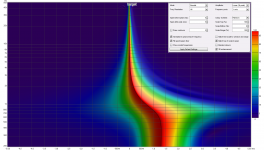 2006.png556.9 KB · Views: 121
2006.png556.9 KB · Views: 121 -
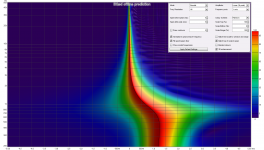 2005.png685.7 KB · Views: 127
2005.png685.7 KB · Views: 127 -
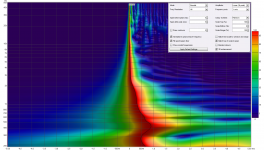 2004.png950.8 KB · Views: 130
2004.png950.8 KB · Views: 130 -
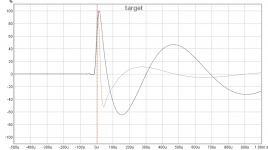 2003.png25.9 KB · Views: 117
2003.png25.9 KB · Views: 117 -
 2002.png27.9 KB · Views: 125
2002.png27.9 KB · Views: 125 -
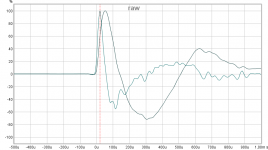 2001.png29.6 KB · Views: 142
2001.png29.6 KB · Views: 142 -
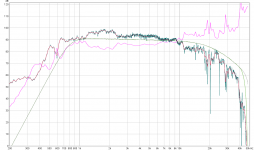 2000.png158.7 KB · Views: 156
2000.png158.7 KB · Views: 156 -
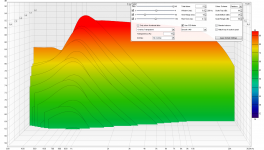 2009.png167.5 KB · Views: 120
2009.png167.5 KB · Views: 120
- Home
- Loudspeakers
- Multi-Way
- Beyond the Ariel
